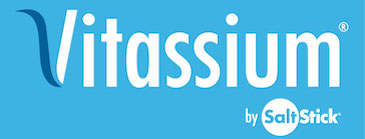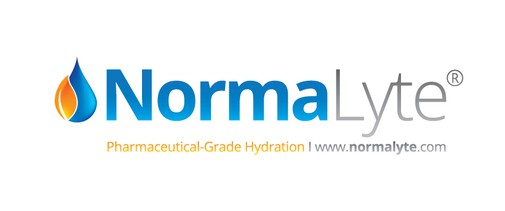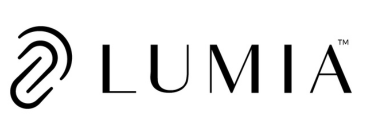Inappropriate sinus tachycardia (IST), a form of dysautonomia that is estimated to impact around 1.2% of the population.(1) IST is characterized by unexpectedly fast heart rates at rest, with minimal physical activity, or both.(2)
Definition
The syndrome of IST is defined as a sinus heart rate over 100 beats per minute (bpm) at rest, with a mean 24-hour heart rate of over 90 bpm not due to identifiable causes, and is associated with distressing symptoms of palpitations.(1)
Clinical Features and Diagnosis
Patients with IST range in presentation from asymptomatic to complaining of extremely debilitating symptoms such as palpitations, weakness, chest pain, shortness of breath fatigue, dizziness, or near syncope.(1,2,3)
IST is a diagnosis of exclusion. If IST is suspected, a thorough medical history review and physical examination should be performed, in order to rule out secondary causes for the tachycardia such as: infections, fever, myocardial infarction, heart failure, pulmonary issues, medications, illegal drugs, structural heart disease and/or thyroid disease. Also low blood volume (hypovolemia) should be ruled in/out as a possible cause. Some individuals who have postural orthostatic tachycardia syndrome (POTS) have overlapping IST.(3)
In order to confirm an IST diagnosis, physicians should order a 12-lead ECG (to rule out other arrhythmias), an echocardiogram, 24 or 48-hour Holter monitor, and an exercise stress test. In some cases, an electrophysiological study may be needed, particularly when the underlying cause of tachycardia is unclear, as well as a tilt table test.(1,4)
Other tests that may be considered, as they can offer information on the patients' cardiovascular autonomic reflexes include: heart rate responses to deep breathing, standing, Valsalva,(1,4) cold face test (diving test),(1,5) heart rate variability,(1,5,6) and baroreflex sensitivity.(1,7)
In someone with IST the results of the above tests will demonstrate a resting heart rate of over 100 bpm, an exaggerated HR response to minimal activity (like going from laying to standing), while the heart rhythm is normal (sinus rhythm). The echocardiogram should reveal a structurally normal heart, and a treadmill exercise test (if used) should document an exaggerated tachycardic response to exercise.(1,5)
Pathophysiology
The mechanisms leading to IST are not completely understood, (2) but there are several underlying pathologies that can result in this syndrome, including increased sinus node automaticity, beta-adrenergic hypersensitivity, decreased parasympathetic activity, and impaired neurohumoral modulation.(1)
Beta-adrenergic receptor antibodies can sensitize beta-adrenergic receptors in some patients, while other patients might have increased sympathetic activity and sensitivity, with or without inherent impaired sinus node automaticity. Other mechanisms include muscarinic2 receptor hyposensitivity, abnormal baroreflex activity and regional autonomic dysregulation.(1,2,8) In some patients with IST similar to POTS, some researchers have noted evidence of length-dependent autonomic neuropathy, excessive venous pooling, beta-adrenergic receptor hypersensitivity, alpha-adrenergic receptor hyposensitivity, altered sympathovagal balance, and brain stem dysregulation.(6,9)
Treatment
IST frequently results in a significantly diminished quality of life. Currently there are no long-term, prospective, placebo-controlled clinical trials on any therapeutic intervention that has demonstrated a substantial improvement in outcomes, and symptoms can continue in some patients despite heart rate control.(1)
There are very few treatments with solid evidence for IST patients. The pharmacologic therapy of patients with IST takes a lot of trial and error and should be aimed at reducing the heart rate and improving symptoms.(1,2,10)
* Beta-blockers and calcium channel blockers, or even combinations of these two categories of medications have been the first-line therapy for IST. They are not always effective and are frequently not well tolerated due to side effects unrelated to HR reduction.(1,2,10)
* Fludrocortisone and midodrine could be helpful, particularly in patients with evidence of peripheral autonomic dysfunction.(10)
* Other suggested treatments include volume expansion, pressure garments, phenobarbital, clonidine, pyridostigmine, psychiatric evaluation, exercise training, and erythropoietin.(1,2,3,10)
* Ivabradine is a promising drug for the treatment of IST. It can slow down a fast heart rate by blocking "funny channel" receptors. A few reports suggest that ivabradine may have a beneficial effect by reducing the heart rate and markedly improving the quality of life of patients with IST, even in those refractory to β-blocker therapy.(1,2,10,12,13) There are also studies that mention the use of a combination of ivabradine and metoprolol as a safe and effective therapeutic option.(11)
* Sinus node ablation/modification. The role of sinus node ablation and modification in patients with IST has not been well defined and it should only be seen as a last resort treatment. Although short-term success rates were favorable (76%-100%), long-term outcomes were disappointing, and the need for permanent pacing and other procedural-related complications has been reported.(1,2,3,9,10,14) Sinus node ablations are not recommended in patients with POTS, as this often worsens the condition.(1,15)
Prognosis
The prognosis of IST is not clearly understood yet. The risk of tachycardia-induced cardiomyopathy is largely unknown and thought to be very low, only reported in isolated case reports.(12,13) There is little information on the long-term outcomes of this condition, although there is no known mortality. IST is believed to be a chronic condition.(1)
Untreated IST has been suggested a predisposing factor to the development of systemic hypertension.(16)
Adequate management of IST remains a major challenge for physicians and patients alike. Most systemic symptoms seem to persist despite HR slowing by using different treatment options as outlined above, so a multidisciplinary approach involving pharmacotherapy along with catheter ablation to modify the sinus node in select cases, as well as treatment of any associated behavioral and psychological disorders, physical conditioning, and lifestyle modification, is essential.(1)
Sources
1. 2015 heart rhythm society expert consensus statement on the diagnosis and treatment of postural tachycardia syndrome, inappropriate sinus tachycardia, and vasovagal syncope. Sheldon RS, Grubb BP, Olshansky B, Shen WK, Calkins H, Brignole M, Raj SR, Krahn AD, Morillo CA, Stewart JM, Sutton R, Sandroni P, Friday KJ, Hachul DT, Cohen MI, Lau DH, Mayuga KA, Moak JP, Sandhu RK, Kanjwal K. Heart Rhythm. 2015 Jun;12(6):e41-63.
2. Inappropriate sinus tachycardia. Olshansky B, Sullivan RM. J Am Coll Cardiol 2013;61:793-801.
3. Inappropriate sinus tachycardia, postural orthostatic tachycardia syndrome, and overlapping syndromes. Brady PA, Low PA, Shen WK. Pacing Clin Electrophysiol. 2005 Oct;28(10):1112-21.
4. Frequent additional tachyarrhythmias in patients with inappropriate sinus tachycardia undergoing sinus node modification: an important cause of symptom recurrence. Frankel DS, Lin D, Anastasio N et al. J. Cardiovasc. Electrophysiol.23(8),835-839 (2012).
5. Mechanism of "inappropriate" sinus tachycardia. Role of sympathovagal balance. Morillo CA, Klein GJ, Thakur RK, Li H,Zardini M, Yee R. Circulation 1994;90:873-877.
6. Heart rate variability in inappropriate sinus tachycardia. Castellanos A, Moleiro F, Chakko S, Acosta H, Huikuri H, Mitrani RD, Myerburg RJ. Am J Cardiol 1998;82:531?534.
7. Impaired baroreflex gain in patients with inappropriate sinus tachycardia. Leon H, Guzman JC, Kuusela T, Dillenburg R, Kamath M, Morillo CA. J Cardiovasc Electrophysiol 2005;16:64-68.
8. Inappropriate sinus tachycardia may be related to an immunologic disorder involving cardiac beta andrenergic receptors. Chiale PA, Garro HA, Schmidberg J, Sanchez RA, Acunzo RS, Lago M, Levy G, Levin M. Heart Rhythm. 2006 Oct;3(10):1182-6.
9. Is sinus node modification appropriate for inappropriate sinus tachycardia with features of postural orthostatic tachycardia syndrome? Shen WK, Low PA, Jahangir A et al. Pacing Clin. Electrophysiol.24(2),217-230 (2001).
10. Inappropriate sinus tachycardia: current therapeutic options. Femenia F, Baranchuk A, Morillo CA. Cardiol Rev. 2012 Jan-Feb;20(1):8-14.
11. Ivabradine in combination with metoprolol succinate in the treatment of inappropriate sinus tachycardia. Ptaszynski P, Kaczmarek K, Ruta J, Klingenheben T, Cygankiewicz I, Wranicz JK. J Cardiovasc Pharmacol Ther. 2013 Jul;18(4):338-44.
12. A pediatric case of cardiomyopathy induced by inappropriate sinus tachycardia: efficacy of ivabradine. Romeo E, Grimaldi N, Sarubbi B, D'Alto M, Santarpia G, Scognamiglio G, Russo MG, Calabro R. Pediatr Cardiol. 2011 Aug;32(6):842-5.
13. A case of cardiomyopathy induced by inappropriate sinus tachycardia and cured by ivabradine. Winum PF, Cayla G, Rubini M, Beck L, Messner-Pellenc P. Pacing Clin Electrophysiol. 2009 Jul;32(7):942-4.
14. Inappropriate sinus tachycardia (IST): management by radiofrequency modification of sinus node. Jayaprakash S, Sparks PB, Vohra J. Aust N Z J Med. 1997 Aug;27(4):391-7.
15. Is sinus node modification appropriate for inappropriate sinus tachycardia with features of postural orthostatic tachycardia syndrome? Shen WK1, Low PA, Jahangir A, Munger TM, Friedman PA, Osborn MJ, Stanton MS, Packer DL, Rea RF, Hammill SC. Pacing Clin Electrophysiol. 2001 Feb;24(2):217-30.
16. Chronic inappropriate sinus tachycardia in elderly females. Lopera G, Castellanos A, Moleiro F, Huikuri HV, Myerburg RJ. Ann Noninvasive Electrocardiol. 2003 Apr;8(2):139-43.
| | |




